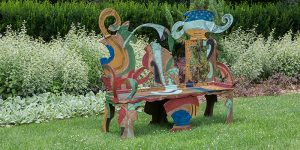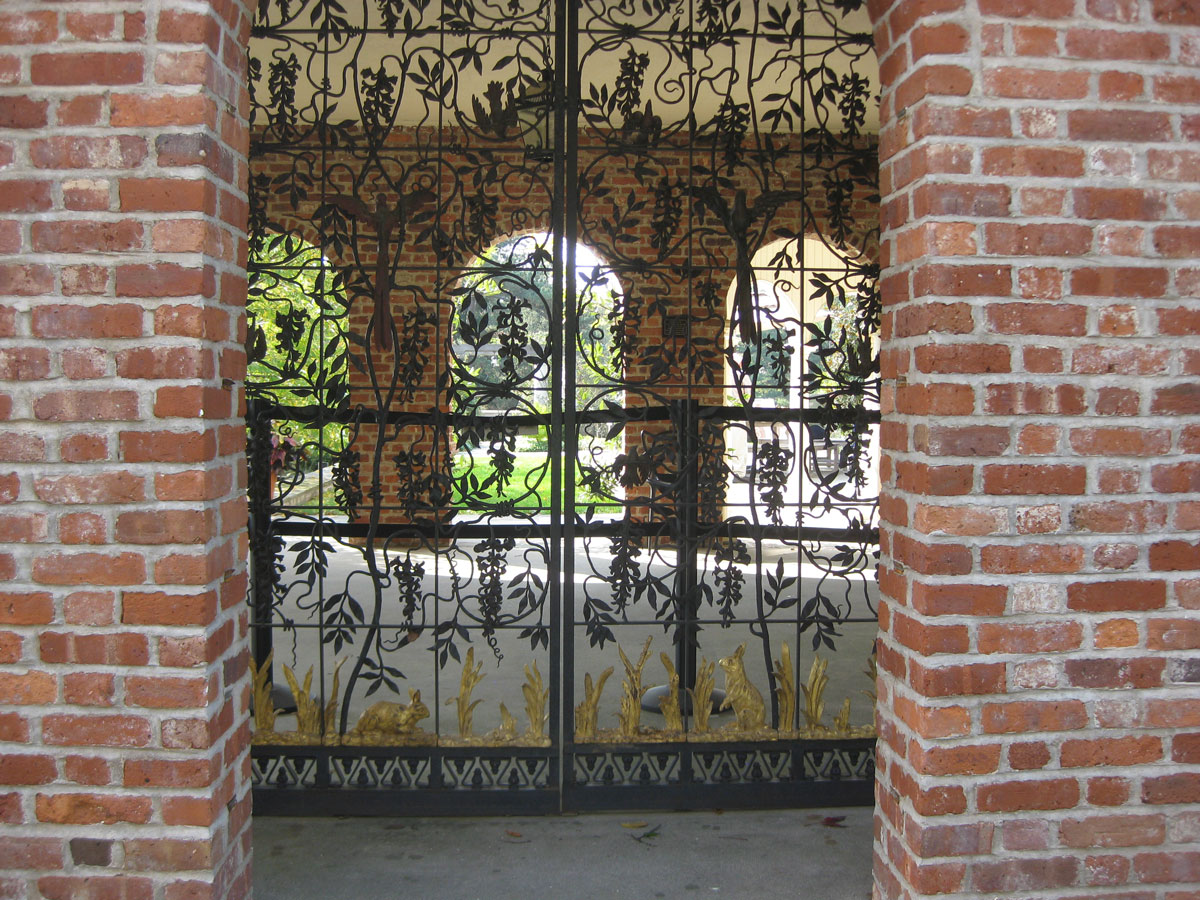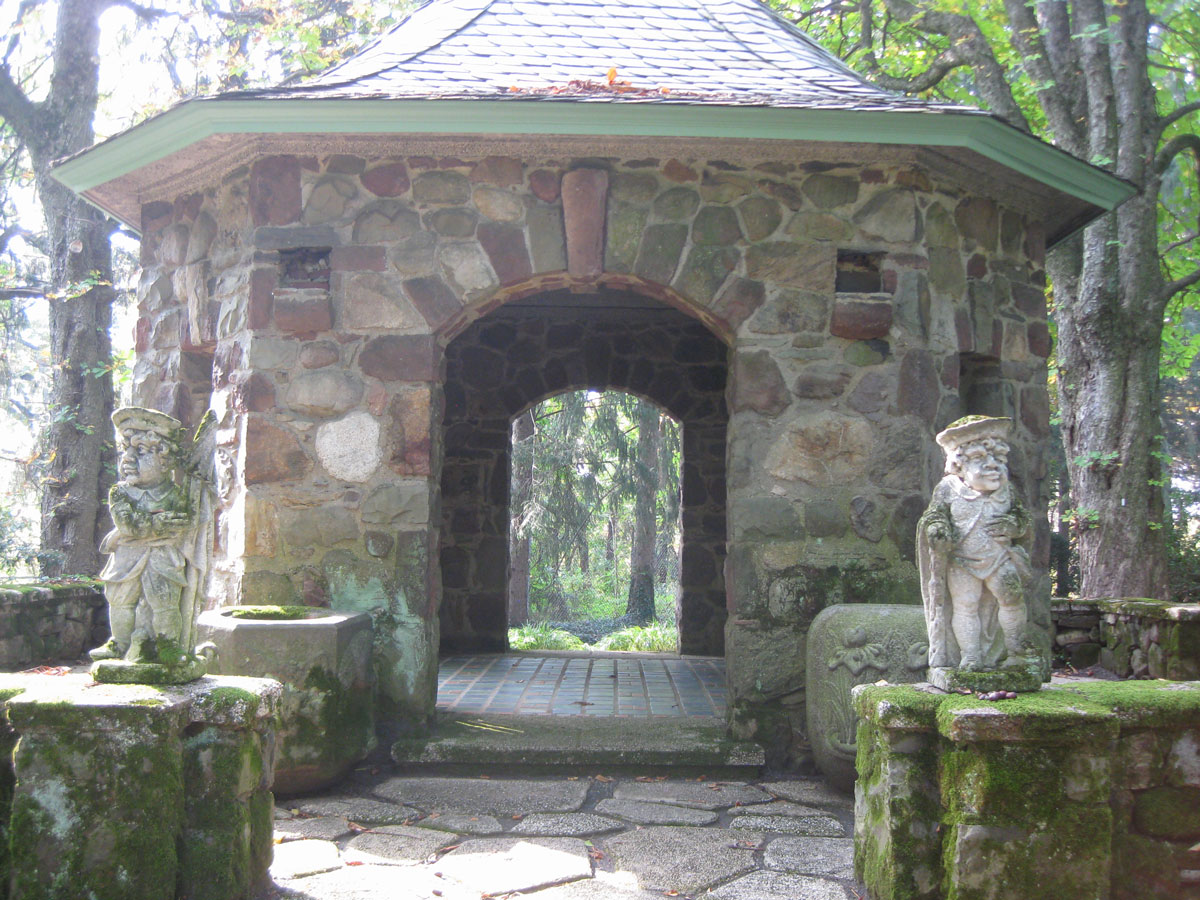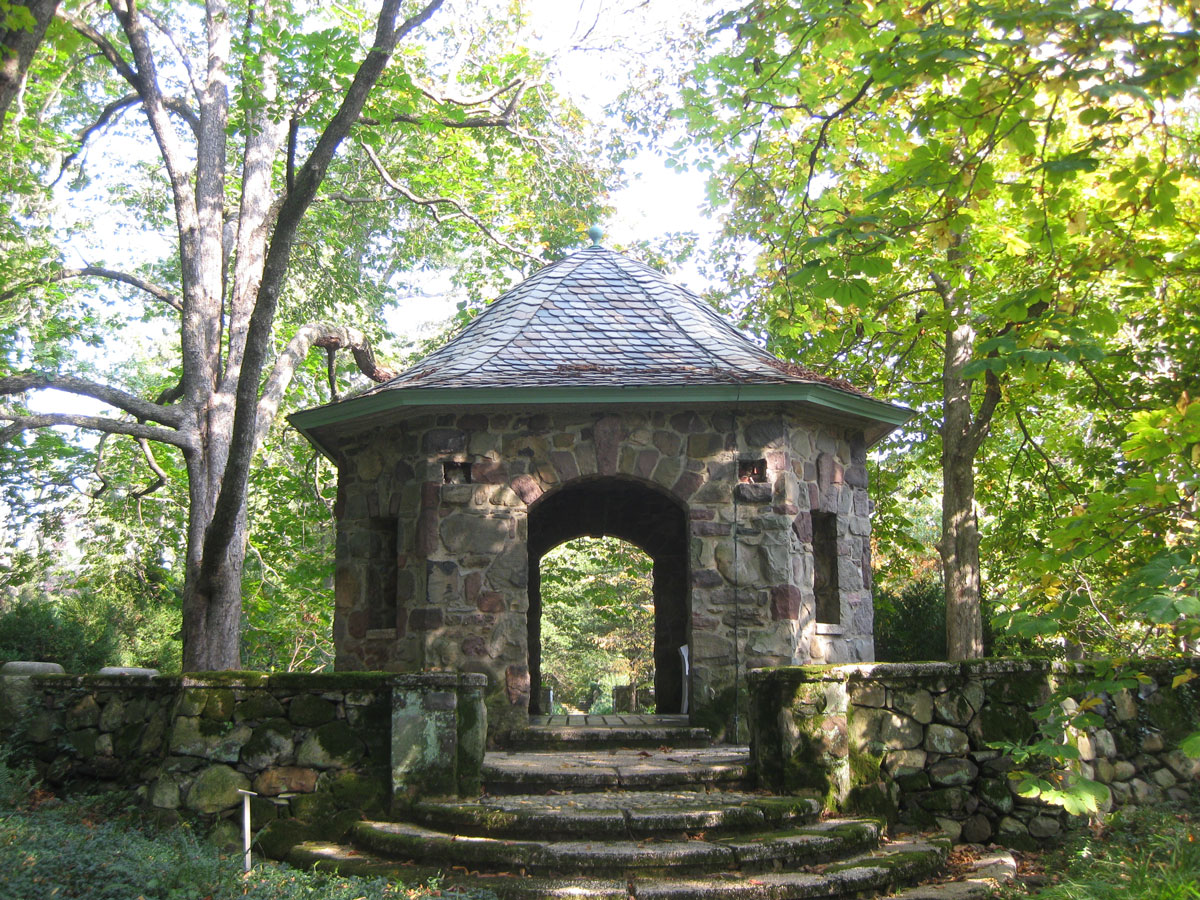Getting Close to Nature at Greenwood Gardens
Posted in History, Shop/Book Reviews on December 15 2016, by Joyce Newman
Joyce H. Newman is an environmental journalist and teacher. She holds a Certificate in Horticulture from The New York Botanical Garden.
 Greenwood Gardens in Short Hills, New Jersey, offers a refreshing escape from city life to a wonderful country estate. Located less than an hour from New York City, the gardens sit on 28 acres and have been open to the public only in the last four years. They continue to be restored and developed by a small but dedicated staff and many volunteers, all led by generations of the Blanchard family who purchased the property as their country home in 1949.
Greenwood Gardens in Short Hills, New Jersey, offers a refreshing escape from city life to a wonderful country estate. Located less than an hour from New York City, the gardens sit on 28 acres and have been open to the public only in the last four years. They continue to be restored and developed by a small but dedicated staff and many volunteers, all led by generations of the Blanchard family who purchased the property as their country home in 1949.
Upon arrival, a striking allée of tall Norway spruce and London plane trees flank either side of the entrance road up the hill to the main house and gardens. These artistically planted trees were selected by Peter P. Blanchard Jr. and his wife Adelaide Frick Blanchard in the early 1950s, and they were very carefully nurtured by their young son Peter P. Blanchard III.
 Today he is the founder of Greenwood as a public garden, and serves as the President of the Board of Trustees. Blanchard is an ardent naturalist and author of We Were an Island: The Maine Life of Art and Nan Kellam (UPNE, $29.95), available in the NYBG Shop. He recently wrote a book that offers his personal insights from growing up at Greenwood, called Greenwood: A Garden Path to Nature and the Past ($20, available online). On an early November visit to the garden, I was lucky to meet him and to get a guided tour.
Today he is the founder of Greenwood as a public garden, and serves as the President of the Board of Trustees. Blanchard is an ardent naturalist and author of We Were an Island: The Maine Life of Art and Nan Kellam (UPNE, $29.95), available in the NYBG Shop. He recently wrote a book that offers his personal insights from growing up at Greenwood, called Greenwood: A Garden Path to Nature and the Past ($20, available online). On an early November visit to the garden, I was lucky to meet him and to get a guided tour.
Restoring Arts and Crafts Features
The Blanchards built a new house on the property in 1950, replacing an Italianate mansion that had fallen into disrepair. But at the same time, they retained many earlier features of the estate dating from the 1920s and ’30s, which now have been meticulously restored and are amazing in their workmanship and beauty.
As you enter the main house and garden area, there is a stunning hand-wrought iron gate placed in an open air pavilion. The gate was created by the American master metalworker Samuel Yellin (1885–1940), whose designs and prolific studio had a major role in the Arts and Crafts Movement of the 20th century. Yellin, who emigrated from Russia to the Philadelphia area as a young boy, is called the “Tiffany of metalwork” with good reason. His gate, like others done for residential commissions, depicts a delicate, almost poetic scene with birds of paradise, floral vines, and wildlife pictured in a naturalistic style, it looks like one of those royalty free photos which look amazing.

Sweeping Views
Walking past the gate, you find a sunny patio with a variety of strategically placed container plants and a sweeping view of the distant Watchung Mountain Ridge to the south. Docent Barbara Ciavarella greeted me and explained that the property lies on its own ridge bordering some 2,000 acres of South Mountain Reservation—part of the Essex County Park System. The patio, she said, sits about 400 feet above a low-lying meadow with ponds at the base of the mountains.
Leaving the patio with Blanchard as my guide, we stopped at a flower border with purple, fall-blooming Crocus speciosus and mounds of sparkling blue Aster oblongifolius ‘Raydon’s Favorite’, shimmering with tiny honeybees.
Peter Blanchard described how the bees are part of a special joint project with Overlook Hospital in Summit, New Jersey. The hospital has given the garden several hives, which used to be located on the hospital’s rooftop.
Another inspiring view is from the front lawn of the Georgian Revival-style house. A series of wide stone steps leads down to a former reflecting pool, now containing whimsical dolphin sculptures. The vista is framed by huge mature conifers and shrubs on either side of the terraced lawns flowing down the hillside.
As we contemplated this lovely view, I asked Blanchard what he hoped visitors would take away from their experience at Greenwood. He answered thoughtfully: “A sense of peace and calm,” and he added, “a closeness to nature.”
Invalid Displayed Gallery
Colorful Rookwood Art Tiles
Decorating a retaining wall along the lawn are brightly-colored, hand-crafted medallions made from Rookwood glazed tiles—created by the famous pottery works based in Cincinnati, Ohio. A beautifully rendered tile fountain with a head-shaped water spout lies inside a little grotto in the wall, creating a quiet resting spot amidst beds filled with tall grasses in bloom.
Rookwood tiles again appear as architectural features on the ceiling of a charming round Tea House located down a woodsy path. It was built from local stone in the 1920s, yet its seashell-shaped tiles are still richly colored in blues, greens, and brown.
The floor of the Tea House is paved with pastel-colored Fulper tiles that were made nearby in Flemington, New Jersey. Surrounding the Tea House are walled, circular stone steps leading down to a lower walk and terrace. As you walk down the steps, there are large stone figures sitting on the wall, each one about three feet tall, in the form of chess pieces, including knight, pawn, queen, and king. They look like characters from Alice in Wonderland and the effect is magical.
Invalid Displayed Gallery
A Cool Summerhouse
Further along in the woods, in a rustic setting, sits an octagonal stone gazebo called the Summerhouse. The copper-rimmed, cone-shaped roof is shaded by four gigantic horse chestnut trees, providing a cool resting spot for hot summer days. From inside, each window frames a view of the trees. Another Fulper tile floor in cool pastel colors adds to the summery feel.
Horticultural Practices
In May 2015, a new Director of Horticulture, Sonia Uyterhoeven, started to work at Greenwood and has already helped to make plant identification much more accessible for visitors. Uyterhoeven was previously a Gardener for Public Education at NYBG. She noted that the number of botanically informative plant labels at Greenwood has doubled in the last year—without detracting from the garden. The signage is made from anodized aluminum and she hopes it will last for 15 years.
For home gardeners, Uyterhoeven points out several plants that can still look very good even late in the fall. They include catmint (Nepeta ‘Joanna Reed’); heavenly bamboo (Nandina domestica); Chinese abelia (Abelia chinensis); roses; and bluebeard (Carypoteris divaricata ‘Snow Fairy’).



